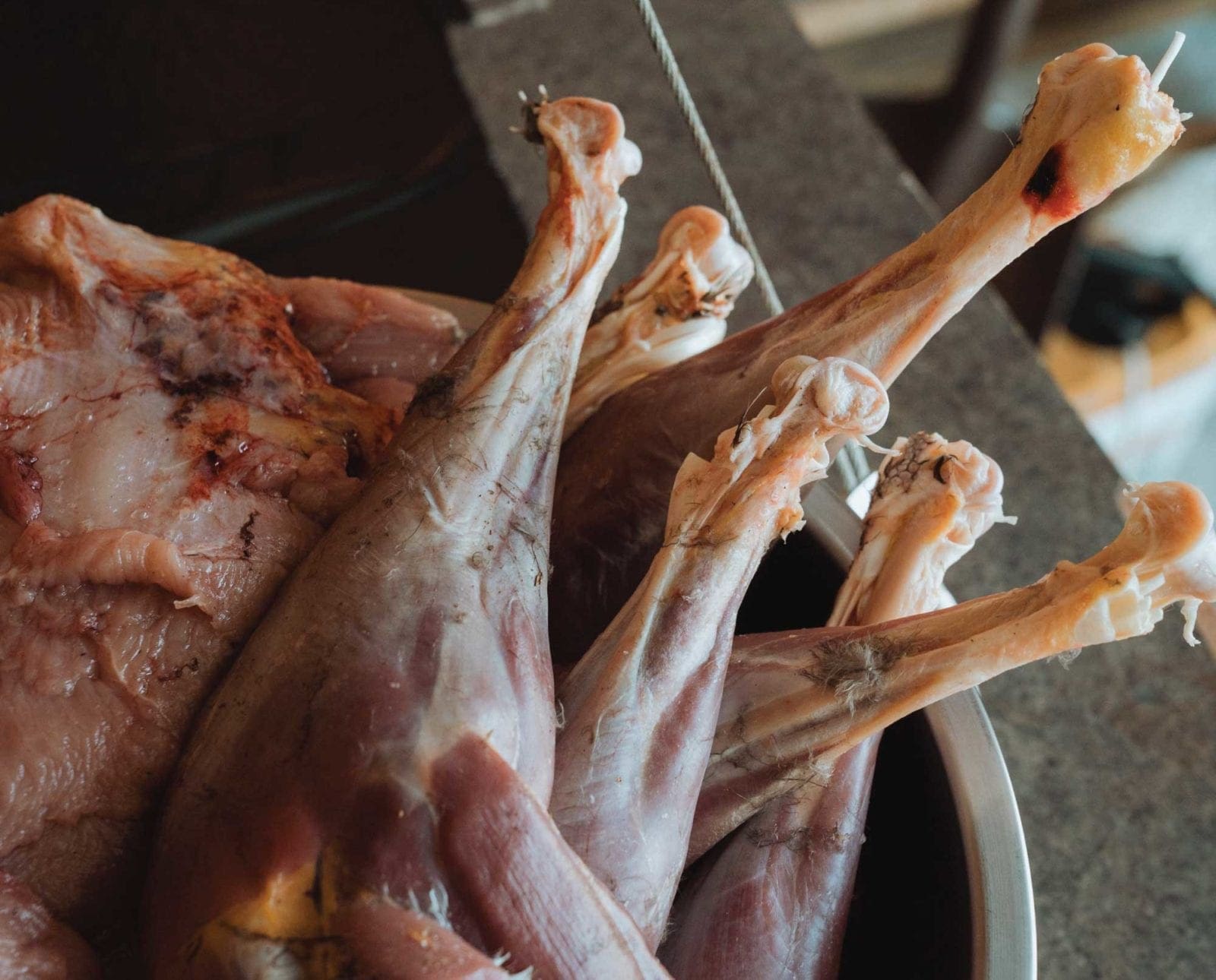Home » Small Game Cooking » Wild Turkey Meat: Nutrition, Cooking, and Handling
Wild Turkey Meat: Nutrition, Cooking, and Handling

Jack Hennessy grew up in the South Suburbs of Chicago…
Learn the basics of wild turkey meat, the typical flavor profile, and techniques for cooking it to perfection
“Shoe leather” is how I once heard a client refer to the culinary merits of wild turkey. I was attending graduate school and had only shot my first turkey the previous fall. This client invited me to his property for a “guaranteed” late-season bird in eastern Washington but warned me, “My wife knows how to cook, and she couldn’t get me to eat more than one bite.”
The biggest misconception with wild turkey is that you can cook it like their obese, domestic counterparts found in grocery stores. You simply cannot. While some of the details can vary depending on species, region, and diet, what follows is a general profile of wild turkey meat.
Watch: Our Connection – A Turkey Hunting Film on Connecting with Our Food
General nutrition
(based on a serving of 100g or 3.5oz)
109 calories
25g protein
1.1g fat
Turkey meat overview
Wild turkeys have white breast meat with darker meat found in the thighs and legs, similar to domestic turkeys. The meat is incredibly lean throughout—unlike domestic turkeys—and breasts can easily dry out if overcooked. On the other hand, the legs, wings, and thighs require several hours of cooking at low temperatures in order to tenderize.
Flavor profile
If cooked correctly, wild turkey breast meat tastes like a firmer version of domestic turkey breast, though some would suggest that it tends to taste more like the dark meat of a domestic turkey. The legs and thighs can take on very subtle flavor notes that approach beef, depending on the cooking method (e.g., a long braise in stock followed by a smoke).
Yields
A typical wild turkey yields 8–12 pounds or more, including bone-in meat, depending on the size of the bird and assuming that all parts are kept (legs, thighs, wings, breasts, and giblets).
General methods for cooking wild turkey
All cuts should be brined to retain moisture because wild turkey meat is very lean.
Breasts
The size of the breast and the ease with which it can dry out requires some careful attention and strategy. It is worth considering butterflying large breasts from big, spring toms, or even just cutting them into smaller pieces. Alternatively, you can cook an entire breast at low temperatures (no higher than 275 degrees F) until the center reaches a temperature of 160 degrees F. Should you grill a very large breast at higher heat, you run the risk of drying out the exterior layers before the middle hits 160 degrees F.
Wings, legs, and thighs
With more collagen present throughout these muscles, this meat will toughen up prior to tenderizing. Low-and-slow cooking methods will turn the collagen to gelatin and allow the meat to finally yield. The final, internal temperature at this point is likely closer to 200 degrees F or higher.
A common method for cooking any of these cuts is a 3-hour (or more) braise in water, stock, or other sauces, followed by a quick sear or brief smoke to add texture to the outside of the meat. The braise will tenderize these cuts and should be done at a very low simmer. You can smoke prior to braising, but note that the time required to tenderize these cuts after a 2- to 3-hour smoke will likely be 12-14 hours.
Giblets (gizzard, liver, neck, and heart)
Gizzard: There is likely no better gizzard to learn how to clean than a wild turkey gizzard. These things are so large, it’s incredibly hard to mess up. In my opinion, there is really no wrong way to clean a gizzard. Your end goal is the same: ruby red meat and nothing else. It doesn’t matter what shape it’s in—it’ll all eat the same.
Hank Shaw offers great advice on how to clean a gizzard but the main thing to remember is to first cut open the gizzard and wash out the grit in a large bowl with lukewarm water. Dump that grit water in your backyard—do not put down your drain, as that grit can mess up your pipes.
From there, as mentioned above, work toward your goal of only ruby-red meat. Use a good fillet knife to trim off the silver-skin and that membrane-like grinder plate. It sometimes helps to freeze the gizzard for an hour to facilitate trimming.
Liver: I’m not a liver guy, but you can fry this, turn it into pâté, or smoke it and give to your loyal pup(s).
Heart: Clip away any connecting arteries so that it’s just the heart. Cook with any method that you prefer, but make certain to not overcook it. Heart is best served medium-rare, or 130-135 degrees F.
Neck: The neck is worth saving either for making broth or to add to gravy by lightly braising for hours, then picking meat from the bones and serving in gravy.
As always, reach out to me on Instagram (@WildGameJack) with any questions or comments and be sure to check out my wild game recipes and cooking instructions here.
Jack Hennessy grew up in the South Suburbs of Chicago and didn't start hunting until he attended graduate school in Spokane, Washington, at the age of 26. Hennessy began work in professional kitchens in high school but didn't start writing wild game recipes until he joined the Spokesman-Review in 2014. Since then, his recipes have appeared with Petersen's Hunting, Backcountry Journal, Gun Dog Magazine, among many others. He now lives with his Wirehaired Vizsla, Dudley, in Wichita, Kansas.



